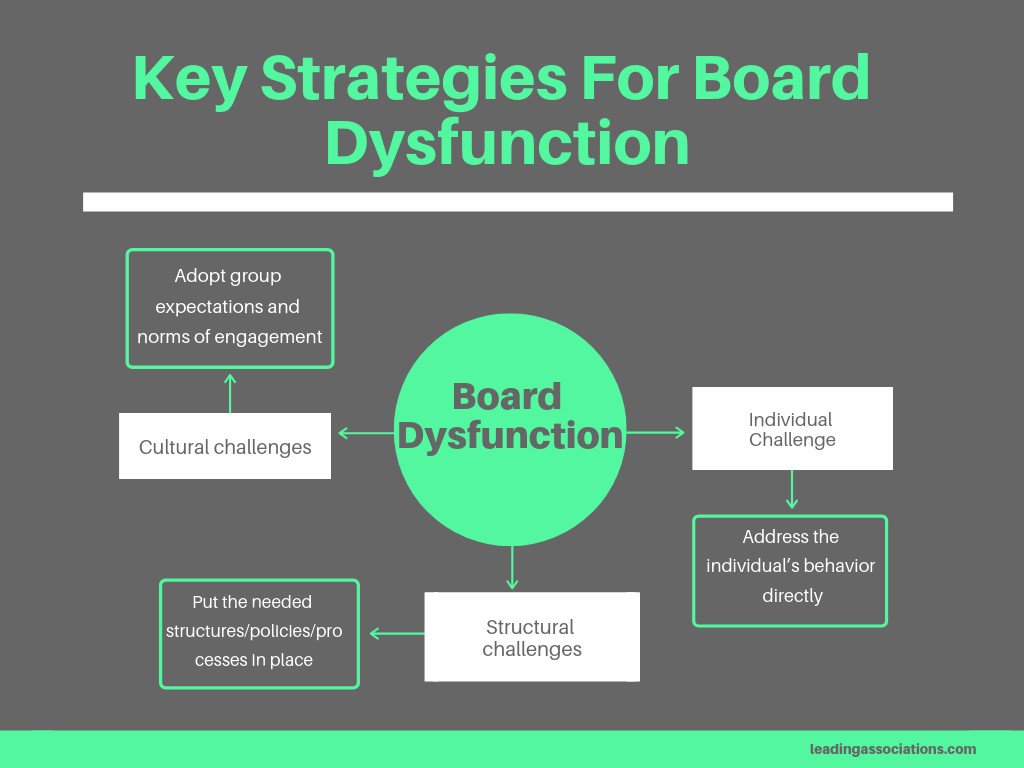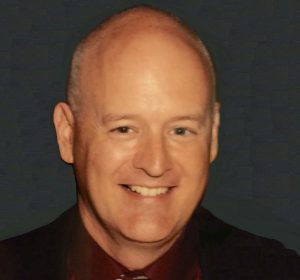The key to overcoming dysfunction and optimizing function is to first identify the source of the challenge. Functional challenges fall into three main categories which often work in combination with each other. They include:
- Individual
- Structural
- Cultural
Most of the resources on improving board effectiveness tend to focus solely on the structural aspect of governance – policies, procedures, Roberts Rules of Order, bylaws, statute, fiduciary duty, etc. – for overcoming dysfunction. But it’s the human element that’s the real challenge. How well board members play in the sandbox together is far more important than processes, policies and procedures – which are often completely ignored in the heat of battle.

Strategies for Addressing Board Dysfunction
- Individual challenges > address the individual’s behavior directly
- Structural challenges > put the needed structures/policies/processes in place
- Cultural challenges > adopt group expectations and norms of engagement
In reality, most board challenges contain elements of all three categories. All three may be – and usually are – present, reinforcing each other. The key to solving the challenge is identifying the primary category driving the dysfunction and address it first.

- Individual: A single divisive individual joining an otherwise united board might create a factional cultural dynamic in response to the individual’s behavior. The board might also have inadequate structural mechanisms in place to address such behavior – written policies, procedures, norms of engagement— due to a history of harmony and perceived lack of need.
- Cultural: A board with a “shiny object” culture (i.e., they pursue every “good idea” board members suggest) might follow a charismatic individual’s personal agenda, which is not aligned with the organization’s mission. Further, no structure exists – such as a Strategic Plan – to help prevent such distractions.
- Structural: A board with a constituency-based structure (i.e., fixed geographic or special interest representation), might evolve a divided/parochial culture in which an individual board member believes their fiduciary responsibility is to the constituency they represent and not to the organization as a whole, lobbying for disproportionate resources and special attention.
In the second example, if the board came to a group agreement to adopt a mission-driven, strategy-focused culture, followed by adopting a Strategic Plan, it would improve its ability to say “no” to an individual’s personal agenda that doesn’t fit the mission/strategic focus.
In the final example, if the board were to adopt a competency-based selection process vs. fixed constituency-based representation, the confusion over who board members represent – a constituency vs. the organization as a whole – could be eliminated.
"rEvolutionary Governance™ is built on the idea that every association, regardless of size and resources, can operate optimally at the stage of evolution it is in now."
Let’s discuss more strategies to improve the health of your Association’s Board of Directors. Contact Leading Associations today!
About the Author
 Jeff Arnold, MAM, CAE, is CEO of Leading Associations which supports professional associations by bringing a full spectrum of board, management and operational solutions that help them work through challenges that inhibit progress, and grow membership.
Jeff Arnold, MAM, CAE, is CEO of Leading Associations which supports professional associations by bringing a full spectrum of board, management and operational solutions that help them work through challenges that inhibit progress, and grow membership.
Jeff brings a combination of association experience and formal education to Leading Associations’ clients. His present responsibilities include dealing with both the strategic and tactical aspects of running associations. His special areas of expertise include working with boards and committees, certification, training programs, and membership systems. You can reach Jeff on LinkedIn or via email.

